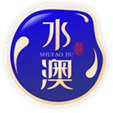Where is the "last mile" of wine marketing?
2020-10-24
Data show that my country’s community consumption accounts for more than 20% of the total retail sales of consumer goods in the city, while in developed countries, the proportion of community commerce is generally around 40%. With the prosperity and development of the large chain supermarket industry, community supermarkets rely on quick convenience. Services have developed rapidly in recent years and become one of the most common consumption scenarios.

At the "103rd National Sugar and Alcohol Commodity Fair Main Forum" held in Jinan on October 13th with the theme of "New Ecology, New Opportunities", Chen Liping, Executive Dean of China Consumer Big Data Research Institute, presented the theme report "2020 "The Business Trends and Development Trends of Community Supermarkets in 2008" believes that after the epidemic, online sales and home services will become the main models of retail or community supermarket marketing.
Industry insiders believe that for the wine industry, community supermarkets and convenience stores are the "last mile" of wine marketing and the "weathervane" of the industry terminal. Due to the development of the times and the impact of the epidemic, consumption habits are gradually shifting to online It has become a development trend in the new era, prompting wine companies to accelerate the exploration of channels on the route.
01
Consumption slows down, wine companies and supermarkets "same frequency" development
In the report, Chen Liping took the data of Ant Business Alliance as an example to analyze in detail the sales of grain, oil and food from January to July this year. As of October 2020, Ant Business Alliance has 59 member companies distributed in 26 provinces and cities across the country, operating more than 4,300 stores and total sales exceeding 80 billion yuan. Almost all the member companies of the Ant Business Alliance are leading supermarket companies in the region. It can also be said that this is the largest voluntary supermarket chain organization in China at present, and its statistical data is very representative.
This year, the sudden impact of the new crown epidemic on market consumption is self-evident. After a brief decline in February, supermarket companies showed a 31% growth in March.
After the epidemic was brought under control, the growth of supermarket sales declined. By July, sales fell by 4% compared with the same period last year. Although the epidemic has been effectively controlled, there is still a trend of weak consumption. Especially since July, the nationwide supermarket companies are in a state of continuous decline, including the 11th Golden Week. From the perspective of big data, the sales of most supermarket companies are lower than the same period last year.
Facing the impact of the epidemic, most supermarket companies have become very cautious in expanding. Compared with the same period last year, the number of supermarket stores has increased by -3%, and it has continued to decline.
Specific to the wine industry, data shows that alcohol consumption increased by 154% in January, but after February, alcohol consumption dropped by 70%, and increased by 20% in March. After that, alcohol consumption was basically between 5% and 10%. % Range growth.
Chen Liping analyzed that because January is the peak season for industry consumption before the Spring Festival, January is a normal growth phenomenon. During the epidemic, people gradually developed the habit of drinking at home. This data is not only reflected in the domestic market. Japanese izakayas closed during the epidemic. Almost all types of alcohol in Japan have reached a historical growth peak. This is actually a lot of people accustomed to drinking and drinking at home.
Chen Liping said through in-depth analysis that household consumption represented by liquor and beer has maintained a relatively stable trend, but beer consumption has begun to decline after July. The weak growth is actually the decline in people's consumption levels. From January to September, resident consumption dropped by 9.1%, which had an impact on many categories, among which some categories of alcohol were more prominent. After the epidemic was brought under control, many consumers took a close look at their wallets and were unwilling to spend money as they did in the past, and there was a phenomenon of insufficient consumption.
The reporter combed the sales data of a number of wine companies in the first half of the year. The data shows that among the listed wine companies, only 8 wine companies have achieved both revenue and net profit growth, and other companies have declined to varying degrees. . Among the 19 listed liquor companies, only Kweichow Moutai, Wuliangye, Shanxi Fenjiu, Jiuguijiu, and ST Huangtai achieved both revenue and net profit growth. Compared with the collective "Piaohong" in previous years, It can be described as "very bleak".
As an important sector of traditional liquor channels, supermarkets have almost "resonated with the same frequency" as the entire liquor industry.
Industry insiders believe that in the first half of 2020, the liquor industry will face the problems of phased destocking and fiercer competition in the industry. On the other hand, due to the continuous impact of the new crown pneumonia epidemic, consumption scenarios such as banquets and business entertainment will decrease, resulting in Due to the weakening of the industry's terminal dynamic sales, due to the influence of these two factors, the operating performance of some wine companies in the first half of the year suffered a certain degree of impact.
02
Consumption shift, online outlet of wine industry opens
Aiming at the future development trend of community supermarkets and wine retail, Chen Liping believes that after the epidemic, online sales and home services will definitely become a major marketing model for retail or community fresh supermarkets. Chen Liping is very optimistic about the future online and offline integration model.
At the same time, more attention must be paid to the integration and construction of the supply chain. In the future, large supermarkets will unite to build distribution centers and processing centers will be a major development trend.
The reporter found that although the growth rate of the alcohol industry has slowed due to the impact of the epidemic in the first half of this year, online channels are a different scene. According to data from the Ali platform, in June 2020, liquor online sales reached 1.011 billion yuan, a year-on-year increase of 130.46%; from January to June, the cumulative online sales of liquor was 4.545 billion yuan, a year-on-year increase of 94.86%. In June, the sales volume of Baijiu Ali channel was 2.5823 million, a year-on-year increase of 45.66% and a month-on-month increase of 3.93%.
The China Liquor Industry Association's market research shows that in terms of new retail, e-commerce platforms such as Ali Retail and JD Xintong are using new technologies to empower traditional store retail upgrades, and online and offline integration has also become the standard for new wine retail. The industry is progressing rapidly.
Li Shukai, senior vice president of Jiuxian.com, once said that at present, e-commerce sales account for about 2% to 3% of the overall sales of the wine industry, which has never accounted for the mainstream. After the epidemic, e-commerce and other online channels will have a significant proportion of sales. Improvement, but it will not be a blowout development. Li Shukai predicts that the transformation of online sales has become an irreversible development trend, and it has also become the "outlet" of the current industry.
02
Marketing helps nuggets sauce wine "bonanza"
Nowadays, in the context of expression of production area and quality expression, there are not only Sichuan sauce and Guijiang sauce, but also in the largest sauce and wine producing area in the north-Yunmen aging, Gubeiyuan, Jingyanggang Laimao, Xiangjiu, etc. The representative Lupai sauce is on the rise, and the nuggets sauce wine is a "rich mine".
In 2020, from the perspective of the concentration of flavors, the Sichuan sauce and Gui sauce enterprises led by Moutai will go south and north to enhance the influence of the production area, enhance the brand influence, empower the brand, expand the influence of the category, and enhance the brand The premium ability.
Junpin Xijiu Experience Hall, Guotai, Diaoyutai and other sauce and wine experience centers are all around us.
“Using the Cloud Gate Winery Museum of the Cloud Gate Wine Industry and the Cloud Gate Sauce Wine Tasting Life Hall, it is mainly to graft the B and C ends of marketing, empower the distributors of the B end, and develop in-depth experience for the C end. Marketing. In 2012, Yunmen Wine Industry built the first wine restaurant in Songcheng. At present, we have deployed 37 above-scale wine restaurant throughout the country." Shandong Qingzhou Yunmen Wine Industry (Group) Co., Ltd. Deputy General Manager Tang Shulin's interpretation of the sauce and wine experience hall is also the original intention of many sauce and wine brands to contact consumers and let consumers drink it first.
In this regard, Tian Zhuopeng, the founder of Beijing Zhuopeng Strategic Agency, pointed out that new retail is a super outlet, the outlet of the wine industry, which solves the problem of people and goods, and builds a consumer-centric, data-enabled pan-retail form. It is stores + community + new technology, both online and offline are very close to consumers.
Ding Huaiyuan, general manager of Diaoyutai State Guest Liquor Company, said: “At present, large and small sauce-flavor liquor companies in the Chishui River Basin have begun to pay attention to the market, pay attention to the market, and learn marketing. With the help of planning and marketing agencies, they are slowly entering the market. ."
It is foreseeable that while the market concentration of sauce-flavored products will increase, the competition for top products will also become more intense. Under the scent of sauce, the competition for high-end and sub-high-end cards with a price of 1,000 yuan will inevitably fall into fierce battle. Who will debut in C position? The market will give the answer.
Related news


